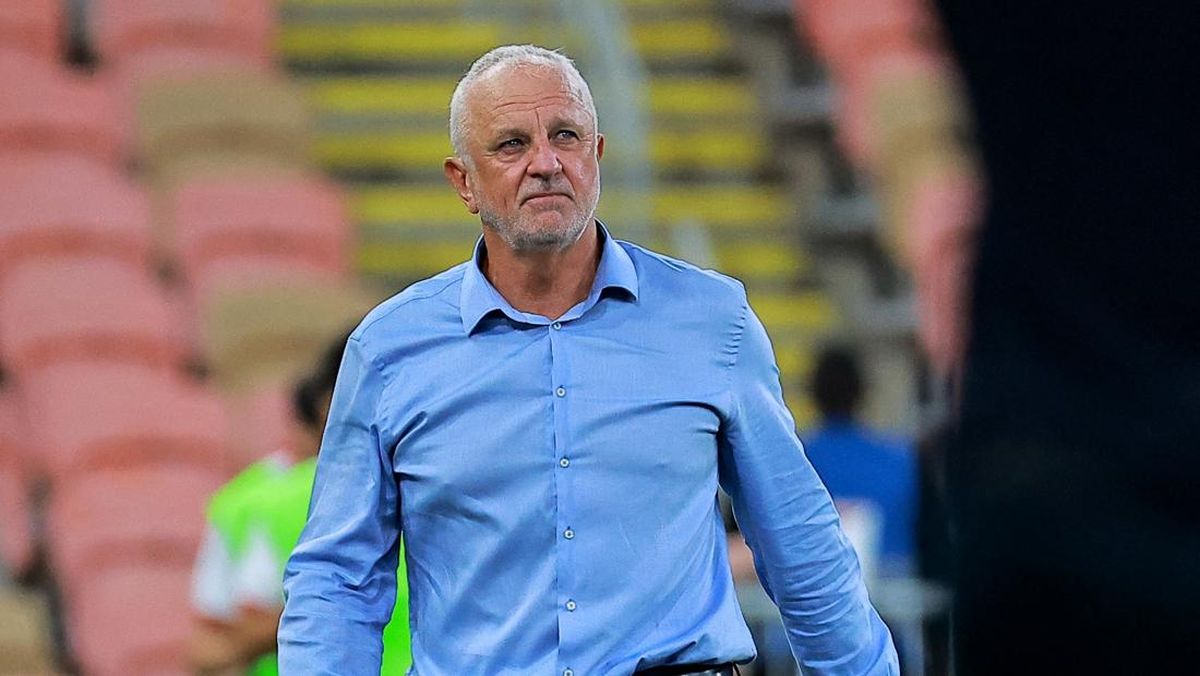Opinion
October 13, 2025 — 3.50pm
October 13, 2025 — 3.50pm
Nuno Matos, the foreign banker brought in to run ANZ Bank, has a big plan and no shortage of confidence to execute it.
He’s seemingly ready to do what it takes to put an end to the fourth-placed bank’s straggling performance. It’s a bold vision, and it’s much-needed for ANZ, but to quote Woody Allen: “If you want to make God laugh, tell him your plans.”
Matos promised changes at the bank from the day he landed, and while he isn’t exactly tearing down everything in sight, he has pressed go on an almighty renovation.
And just to keep things interesting, he expects this ambitious overhaul to be completed in record time – stage one completed in two years, stage two by 2030.

ANZ chief executive Nuno Matos flagged deep job cuts last month but is now unveiling his strategy to lift ANZ’s performance.Credit: Marija Ercegovac
This is the kind of makeover that probably only works with an imported architect at helm like Matos, and it’s no wonder that he has brought in an almost entirely new team of direct reports (a new head of the retail bank, a new chief technology officer and a new chief risk officer) to implement his plans.
Loading
Matos brings a fresh set of eyes to the Australian and New Zealand banking market and, one would think, he is free from legacy thinking. That means he can push ahead with a take-no-prisoners approach.
But can the outsider perspective make Matos a little blind to the local market’s tripwires? Maybe.
On Monday, he used a full array of management buzzwords – “customer-centric approach”, “simplifying” and “delivering value” – to describe how a future ANZ Bank should operate. Which is all well and good, but investors, analysts and ANZ’s customers will be hoping that Matos’ execution matches his intent.
The key pillar of Matos’ makeover of ANZ is to increase productivity – which in layman’s terms means cutting costs, and lots of it.
Axing jobs, which usually sits behind almost every corporate transformation strategy ever employed, is naturally a big part of the plan. In the short term, reducing headcount is a fail-safe way to boost the bottom line.
Loading
If executed poorly it is a recipe for long-term revenue destruction, but Matos on Monday seemed supremely confident that the job cuts announced so far were focused on dead weight and duplication of services inside the bank.
So costs will need to come out of the business, but Matos’ plans also requires ANZ to foster closer relationships with its customers. And that would require the bank to get its technology right and streamline the way it caters to the needs of every customer that interacts with it. That could explain why the plan entails increasing the number of in-house mortgage sales staff ANZ will have and giving them the right tools to better target the higher net-worth customer market (wealthier customers).
Getting all of that right would allow Matos to deliver on the second pillar of the strategy, which is improving revenue.
Once that ball is in motion, Matos wants to hit the targets of lowering ANZ’s cost to income ratio (spending less to generate income) and improving its returns on equity (more profits for investors).
That’s been the holy grail for the industry for a decade, but pretty much every bank has instead watched returns on equity move backwards, thanks in large part to intense competition and the rise of mortgage brokers.
For Matos (or should I say Moses) achieving this would be the equivalent of parting the Red Sea. And you could feel the scepticism in the room as he outlined these ambitions to the assembled investors and analysts.
But he has one major element in his favour. ANZ has been punching below its weight in the retail and commercial (business) market in Australia for a while now, so stopping the rot presents an opportunity.
He also wants to turbocharge the integration of Suncorp’s banking division, which was acquired last year, aiming for it to be complete by June 2027 (two years ahead of the original timetable). And, he wants to see the cost savings from the merger to double to $500 million.
Curiously, the one thing Matos doesn’t seem set on is increasing ANZ’s share of the market. Instead, he intends to make more money from the customers it does have to become more profitable.
But the warp-speed renovation won’t come cheap – the number being quoted on Monday was around $1.5 billion. And Matos has a few tricks to help raise money – the first is to abandon the $800 million share buyback and the second is to fiddle with the dividend reinvestment plan, which will conserve cash.
Will this approach to how ANZ operates stand up to execution test? Time will tell. But watching it play out will be fascinating to watch, and Matos won’t die wondering.
The Business Briefing newsletter delivers major stories, exclusive coverage and expert opinion. Sign up to get it every weekday morning.
Most Viewed in Business
Loading


















































